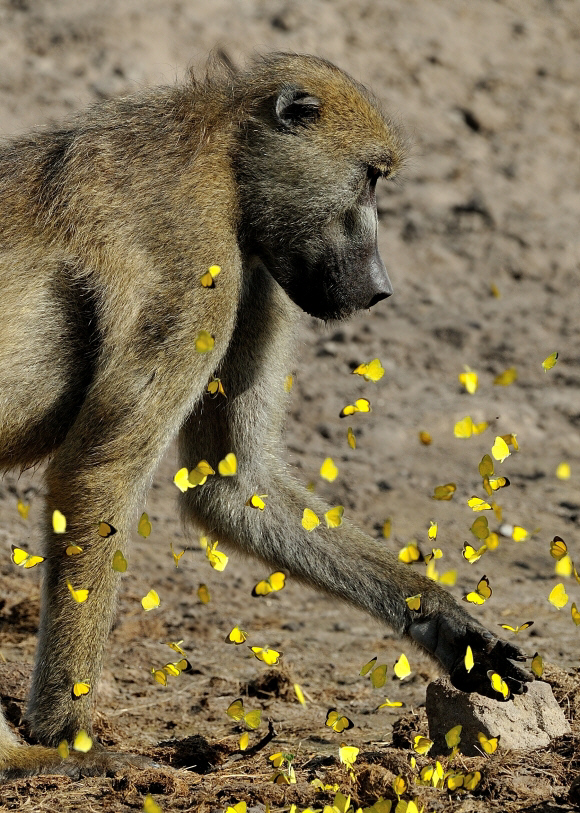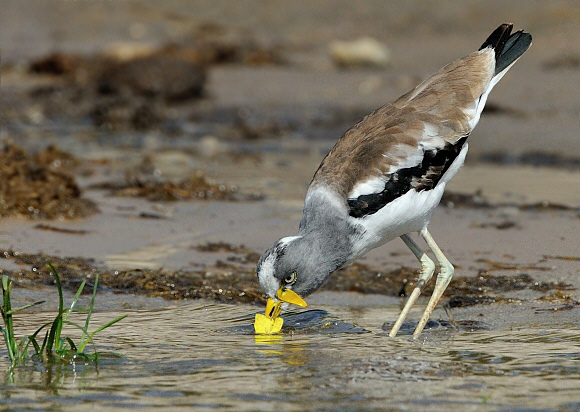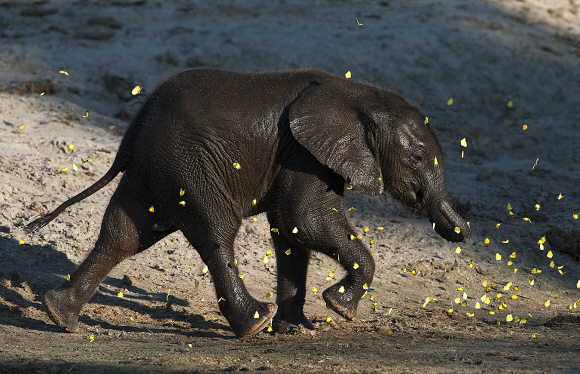
Introduction
The Grass Yellows are all fairly small butterflies, readily recognised by their bright yellow wings and their habit of gathering in small groups on patches of damp sand or soil. Despite their name, none of their caterpillars feed on grasses – the name is derived from the fact that most species are found in disturbed grassy habitats.
Eurema are among the most familiar of tropical butterflies. There are 70 known species worldwide, of which 36 are found in the Neotropical region, 13 in North America, 10 in Africa, 25 in the Oriental region and 10 in Australia / Papua New Guinea. Many are migratory in behaviour and the ranges of several such as hecabe overlap into in 2 or more of the zoogeographical regions.
Eurema brigitta is found across the entire African continent including Madagascar. It also occurs in Arabia, the Indian subcontinent, south-east Asia, Papua New Guinea and Australia.
Habitats
This is a savannah and grassland species but it sometimes enters forests during the dry season.
Lifecycle
The larval foodplants used in Africa include Cassia, Sesbania, Albizia, Tephrosia ( Fabaceae ) and Hypericum ( Clusiaceae ). In other regions of the tropics Desmodium, Neptunia, Sesbania, Senna, Chamaecrista, Pithecellobium ( Fabaceae ) and Erioglossum ( Sapindaceae ) are also used.
Adult behaviour
Males often gather in huge numbers to imbibe mineralised moisture from damp ground and there are many accounts in literature of migratory swarms aggregating in this way. Larsen for example describes seeing “riverbanks turned yellow by vast hordes of mud-puddling males”.

The images here and on the following page were taken by wildlife photographer Veronica Coetzer who vividly recalls watching these butterflies at Chobe in Botswana in March 2012:
“The highlight of the trip was the extraordinary sighting of many thousands of tiny yellow butterflies at Elephant Valley and the fascinating behaviour of animals and birds towards them. White-crowned Lapwings and Blacksmith Lapwings looked like they didn’t really enjoy eating the butterflies – they would first dip them into water before swallowing them. A Little White Egret was in a feeding frenzy running frantically around and in its typical way stalked its prey. Strangely enough it ignored all the thousands of yellow butterflies and only picked out brown coloured ones. What we enjoyed most were the baboons! They ran through them, played between them, tried to catch them and just sat and stared at this phenomenon. Elephants, warthogs and kudu also ran through them and it was just such a magical sight – this yellow confetti dancing all around them”.
It could be concluded from the above description that the yellow colouration of Eurema species is aposematic and intended as a warning towards birds and reptilian predators that the butterflies are unpalatable or noxious.

